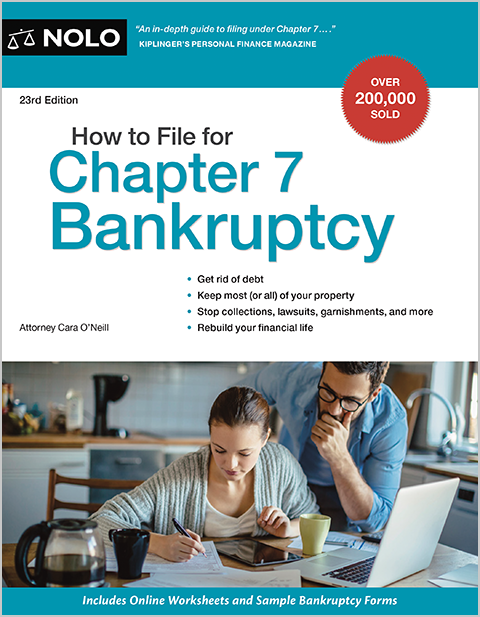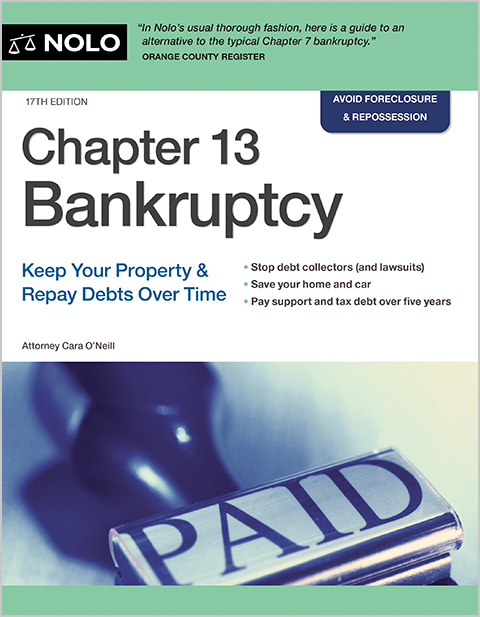Detailed guidance explaining how New Mexico bankruptcy filers can protect home equity using the New Mexico homestead exemption.
When you have equity in your home and plan to file for bankruptcy in New Mexico, the homestead exemption will help you keep your home. In New Mexico, you can choose between the New Mexico homestead exemption and the federal homestead exemption. The federal exemption protects up to $31,575 in home equity as of 2025, and married couples who jointly own their home can double this amount to $63,150. However, the New Mexico homestead exemption will provide greater protection.
- How the Homestead Exemption Works in New Mexico
- 2025 New Mexico Homestead Exemption Amounts
- New Mexico Homestead Exemption Eligibility Requirements
- Nonexempt Home Equity: What Happens in Chapter 7 vs. Chapter 13
- How to Claim New Mexico's Homestead Exemption in Bankruptcy
- Bankruptcy Filing Requirements for New Mexico Residents
- FAQs About Protecting Your Home in New Mexico
- Bankruptcy Planning Tips for New Mexico Homeowners
- Need More Help With a New Mexico Bankruptcy?
How the Homestead Exemption Works in New Mexico
Bankruptcy exemptions allow you to keep certain types of property, including some or all of your home equity, when you file for bankruptcy. You can choose to use either New Mexico's exemptions or the federal exemption set, but not both. It's essential to examine your situation and prioritize which property needs protection the most before deciding.
2025 New Mexico Homestead Exemption Amounts
This summary table compares the federal and state homestead amounts available in New Mexico.
|
Federal Homestead Exemption |
New Mexico Homestead Exemption |
|
|
Homestead exemption amount |
$31,575 |
$150,000 or $300,000 if the spouse of the person claiming the exemption died within two years before the date of claiming the homestead exemption, and if the deceased spouse would have been able to claim the homestead exemption had the deceased spouse survived until the date of claiming the homestead exemption. (N.M. Stat. §§ 42-10-9 and -11.) |
|
Can spouses who file a joint bankruptcy double the exemption? |
$63,150 is available to spouses who co-own property. |
Doubling is available to spouses who co-own property. |
|
Homestead exemption law |
11 U.S.C. § 522(d)(1) (statute doesn't include updated exemption amount) |
N.M. Stat. § 42-10-9 |
|
Other information |
Amounts will adjust on April 1, 2028. |
Amounts adjust periodically. |
|
Compare other federal and state exemptions. |
Filing for Bankruptcy in New Mexico United States Bankruptcy Court for the District of New Mexico |
Tip. Always check the exemption amounts near your filing date, as they are updated every three years.
New Mexico Homestead Exemption Eligibility Requirements
To use New Mexico's exemptions, you must have lived in New Mexico for at least 730 days before filing your bankruptcy petition. Otherwise, you'll use the state where you lived for the greater part of the 180 days before the 730‑day period, which is often—but not always—the exemptions of the state you lived in previously. (11 U.S.C. § 522(b)(3)(A).).
Nonexempt Home Equity: What Happens in Chapter 7 vs. Chapter 13
In Chapter 7, if your home equity exceeds the available exemption, the bankruptcy trustee can sell your property, pay off your mortgage, pay you the exempt amount, and use the remaining proceeds to pay creditors. So the homestead exemption must fully cover the equity if you're to avoid losing your home in Chapter 7.
However, the trustee will take into account selling costs, such as paying off mortgages and liens, realtor fees, closing costs, and the trustee's fee, when deciding whether there is enough nonexempt equity to justify a sale. If a sale won't raise sufficient funds to pay creditors, the trustee will abandon the property, and you'll get to keep it.
In Chapter 13, you can keep your home no matter how much equity you have, as long as you pay creditors at least the value of any nonexempt equity over the life of your three- to five-year repayment plan.
What If You're Behind on Your Mortgage?
In Chapter 7, you also need to be current on your mortgage to avoid foreclosure. In Chapter 13, you can catch up on back payments over time through your repayment plan. An experienced bankruptcy lawyer can help you determine whether Chapter 7 or 13 would be best for you.
What If You Can't Afford Your Mortgage?
You aren't required to keep your home in bankruptcy. In both Chapter 7 and Chapter 13, you can surrender a house and allow it to return to the lender.
Considerations for High Equity Cases
Although this rule doesn't apply in most cases, federal law caps homestead protection at $214,000 for homes acquired within 1,215 days (about 40 months) before filing. This applies to cases filed between April 1, 2025, and March 31, 2028, and applies to equity acquired during the 1,215 days. It also applies in some instances involving fraud and other unlawful acts.
How to Claim New Mexico's Homestead Exemption in Bankruptcy
To claim the homestead exemption in bankruptcy, follow these steps:
- List your home. Disclose the property on your bankruptcy Form Schedule A/B: Property.
- Claim your exemption. On Schedule C: The Property You Claim as Exempt, list the applicable homestead exemption. (11 U.S.C. § 522(d)(1).).
- Declare your intentions. If you file for Chapter 7, indicate your intention to keep or surrender your home on the Statement of Intention.
- Meet eligibility requirements. Confirm your residency period and double-check the exemption amounts with current federal law or a bankruptcy attorney.
- File all required documents. Submit completed bankruptcy forms to the court to start your case. The court will issue an automatic stay protecting you from most collection actions, including foreclosure, as soon as your case is filed. (11 U.S.C. § 362.).​​
Tip. If you're facing foreclosure, bankruptcy can help. However, it can take up to a week for the lender to receive the notice of bankruptcy filing. You or your lawyer should immediately inform the lender of the bankruptcy filing by email or FAX. Provide the date filed, the bankruptcy case number, and the jurisdiction.
Bankruptcy Filing Requirements for New Mexico Residents
Before filing, you'll complete the required pre-bankruptcy credit counseling. Shortly after, you'll complete the second debtor education course. Certificates for both are required for discharge. (11 U.S.C. § 109(h).).
You'll also attend the 341 meeting of creditors, where the trustee responsible for administering your case and any creditors who appear (they usually don't) will ask questions about your petition and claimed exemptions. If everything is accurate and all requirements are met, you'll receive a court order discharging your qualifying debts.
FAQs About Protecting Your Home in New Mexico
- Can you mix and match bankruptcy exemptions in New Mexico?
- Can both spouses claim the federal homestead exemption?
- What about protecting other types of property or assets?
Can you mix and match bankruptcy exemptions in New Mexico?
No. You must choose either the entire state set or the whole federal set. You can't pick the best exemptions from both.
Can both spouses claim the federal homestead exemption?
Yes, if both spouses own the property and file jointly, they can double it and protect up to $63,150 in home equity using the federal homestead exemption.
What about protecting other types of property or assets?
The federal exemption set also includes "wildcard" and personal property exemptions for vehicles, retirement accounts, household goods, and more. The wildcard is $1,675 plus up to $15,800 of unused homestead, for a total wildcard cap of $17,475. (11 U.S.C. § 522(d).)
Bankruptcy Planning Tips for New Mexico Homeowners
- Confirm exemption amounts close to your filing date, as exemption values increase periodically. The next scheduled update for federal exemptions is April 1, 2028.
- Check the statute or consult a bankruptcy lawyer before filing for rules specific to your situation, especially when property is held in unique ways.
- Make sure you understand what can happen with bank accounts, automatic deductions, and utilities when you file.
- For households that need to move or change residences, plan your housing needs before filing, since moving or leasing after bankruptcy is often more difficult.
- Because a home is often a filer's most valuable asset, it's a good idea to meet with an experienced bankruptcy lawyer. Many offer a free initial consultation.
Need More Help With a New Mexico Bankruptcy?
If you don't have the funds for legal help, don't lose hope. Consider reading our guide that explains what to do when you can't afford a bankruptcy lawyer. You'll learn about the many creative ways to finance a bankruptcy filing.
Did you know Nolo has made the law accessible for over fifty years? It's true, and we wholeheartedly encourage research and learning. However, online articles and resources can't address all bankruptcy issues and aren't written with the facts of your particular case in mind. The best way to protect your assets in bankruptcy is by hiring a local bankruptcy lawyer.
- How the Homestead Exemption Works in New Mexico
- 2025 New Mexico Homestead Exemption Amounts
- New Mexico Homestead Exemption Eligibility Requirements
- Nonexempt Home Equity: What Happens in Chapter 7 vs. Chapter 13
- How to Claim New Mexico's Homestead Exemption in Bankruptcy
- Bankruptcy Filing Requirements for New Mexico Residents
- FAQs About Protecting Your Home in New Mexico
- Bankruptcy Planning Tips for New Mexico Homeowners
- Need More Help With a New Mexico Bankruptcy?

